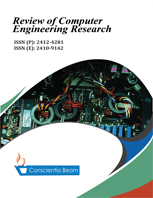Automated Alzheimer's disease diagnosis using radiomics feature extraction on magnetic resonance images
DOI:
https://doi.org/10.18488/76.v10i4.3562Abstract
The current study investigates automated Alzheimer disease diagnosis using radiomic feature extraction on magnetic resonance images. Alzheimer’s disease (AD) is a progressive, incurable neurological brain disorder. Early diagnosis of AD might prevent brain tissue damage and assist with proper treatment. Researchers examine numerous statistical and machine learning (ML) techniques for the detection of AD. Analyzing magnetic resonance imaging (MRI) is a traditional way of analyzing for AD in clinical examination. Diagnosis of AD is challenging because of the similarity in MRI statistics and standard healthy MRI information for elderly people. The application of DL to earlier diagnosis and automatic classification of AD is gaining immense popularity in recent times, as rapid development in neuroimaging techniques has generated large-scale multimodal neuroimaging datasets. This study develops a new Automated Alzheimer's Disease Diagnosis using Deep Learning Model (AADD-DLM) on MRI images. The presented AADD-DLM technique examines the MRI images to assist in the AD diagnostic process. In the presented AADD-DLM technique, three major processes are involved, namely skull stripping, segmentation, and feature extraction. Initially, the AADD-DLM technique uses the U-Net model for the skull stripping process, which enables the removal of the skull regions in the brain MRI. Next, the QuickNAT model is utilized for an effective brain MRI segmentation process. Moreover, the radiomics feature extraction approach is used to generate a useful set of feature vectors. For exhibiting the promising performance of the AADD-DLM technique, widespread experimentation analysis is made on the ADNI database. The optimized model achieves 99.6% accuracy in the ADNI database. The simulation outcomes revealed the improved effectiveness of the AADD-DLM technique over other recent approaches.





